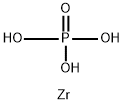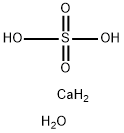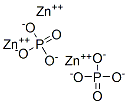diisoctyl acid phosphate
- CAS NO.:27215-10-7
- Empirical Formula: C16H35O4P
- Molecular Weight: 322.43
- SAFETY DATA SHEET (SDS)
- Update Date: 2022-12-21 16:56:50

What is diisoctyl acid phosphate?
General Description
diisoctyl acid phosphate is a colorless liquid. diisoctyl acid phosphate will burn though diisoctyl acid phosphate may require some effort to ignite. diisoctyl acid phosphate is corrosive to metals and tissue.
Reactivity Profile
diisoctyl acid phosphate is an organophosphate ester, and behaves as an acid. Organophosphates are susceptible to formation of highly toxic and flammable phosphine gas in the presence of strong reducing agents such as hydrides. Partial oxidation by oxidizing agents may result in the release of toxic phosphorus oxides.
Health Hazard
TOXIC; inhalation, ingestion or skin contact with material may cause severe injury or death. Contact with molten substance may cause severe burns to skin and eyes. Avoid any skin contact. Effects of contact or inhalation may be delayed. Fire may produce irritating, corrosive and/or toxic gases. Runoff from fire control or dilution water may be corrosive and/or toxic and cause pollution.
Fire Hazard
Combustible material: may burn but does not ignite readily. When heated, vapors may form explosive mixtures with air: indoors, outdoors and sewers explosion hazards. Contact with metals may evolve flammable hydrogen gas. Containers may explode when heated. Runoff may pollute waterways. Substance may be transported in a molten form.
Safety Profile
Moderately toxic by irritation to skin, eyes, and mucous membranes. A corrosive compound. When heated to decomposition it emits toxic fumes of POx. See also PHOSPHATES.
Purification Methods
Contaminants of commercial samples include the monoester, polyphosphates, pyrophosphate, 2-ethylhexanol and metal impurities. Dissolve the acid in n-hexane to give an 0.8M solution. Wash this with an equal volume of M HNO3, then with saturated (NH4)2CO3 solution, with 3M HNO3, and twice with water [Petrow & Allen Anal Chem 33 1303 1961]. Similarly, the impure sodium salt, after scrubbing with pet ether, is acidified with HCl and the free organic acid is extracted into pet ether and purified as above [Peppard et al. J Inorg Nucl Chem 7 231 1958], or as described by Stewart & Crandall [J Am Chem Soc 73 1377 1951]. It can be purified via its copper salt [McDowell et al. J Inorg Nucl Chem 38 2127 1976]. [Beilstein 1 IV 1796.]
Properties of diisoctyl acid phosphate
| Boiling point: | 256°C |
| EPA Substance Registry System | Diisooctyl phosphate (27215-10-7) |
Safety information for diisoctyl acid phosphate
Computed Descriptors for diisoctyl acid phosphate
New Products
4-AMINO-TETRAHYDRO-PYRAN-4-CARBOXYLIC ACID HCL 4-(Dimethylamino)tetrahydro-2H-pyran-4-carbonitrile 4-Aminotetrahydropyran-4-carbonitrile Hydrochloride (R)-3-Aminobutanenitrile Hydrochloride 3-((Dimethylamino)methyl)-5-methylhexan-2-one oxalate 1,4-Dioxa-8-azaspiro[4.5]decane 5-Bromo-2-nitropyridine Nimesulide BP Aceclofenac IP/BP/EP Diclofenac Sodium IP/BP/EP/USP Mefenamic Acid IP/BP/EP/USP Ornidazole IP Diclofenac Potassium THOMAIND PAPER PH 2.0 TO 4.5 1 BOX BUFFER CAPSULE PH 9.2 - 10 CAP SODIUM CHLORIDE 0.1N CVS ALLOXAN MONOHYDRATE 98% PLATINUM 0.5% ON 3 MM ALUMINA PELLETS (TYPE 73) LITHIUM AAS SOLUTION 2-Bromo-1-(bromomethyl)-3-chloro-5-nitrobenzene 2-Bromo-3-nitroaniline N-(3-Hydroxypropyl)-N-methylacetamide 3-Bromo-6-chloropyridazine 4-ethyl-3-nitrobenzoic acidRelated products of tetrahydrofuran








You may like
-
 1-Methyl-6-oxo-1,6-dihydropyridazine-3-carbonitrile 98%View Details
1-Methyl-6-oxo-1,6-dihydropyridazine-3-carbonitrile 98%View Details
99903-60-3 -
 88491-46-7 98%View Details
88491-46-7 98%View Details
88491-46-7 -
 1823368-42-8 98%View Details
1823368-42-8 98%View Details
1823368-42-8 -
 2-(3-(tert-butyl)phenoxy)-2-methylpropanoic acid 1307449-08-6 98%View Details
2-(3-(tert-butyl)phenoxy)-2-methylpropanoic acid 1307449-08-6 98%View Details
1307449-08-6 -
 Ethyl 3-(furan-2-yl)-3-hydroxypropanoate 25408-95-1 98%View Details
Ethyl 3-(furan-2-yl)-3-hydroxypropanoate 25408-95-1 98%View Details
25408-95-1 -
 2-Chloro-5-fluoro-1-methoxy-3-methylbenzene 98%View Details
2-Chloro-5-fluoro-1-methoxy-3-methylbenzene 98%View Details
1805639-70-6 -
 1784294-80-9 98%View Details
1784294-80-9 98%View Details
1784294-80-9 -
 Lithium ClavulanateView Details
Lithium ClavulanateView Details
61177-44-4